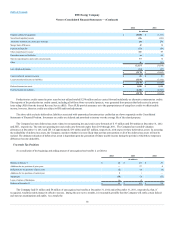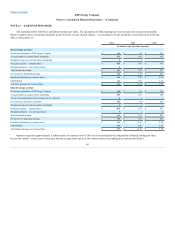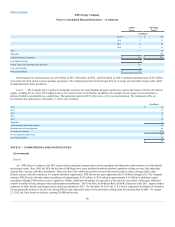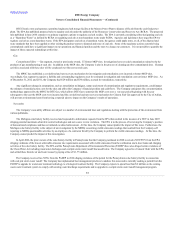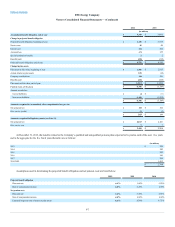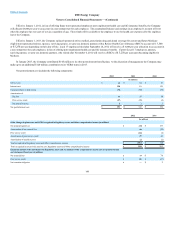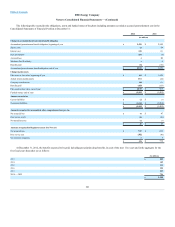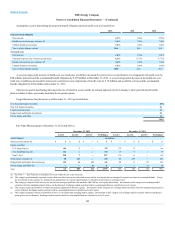DTE Energy 2012 Annual Report Download - page 95
Download and view the complete annual report
Please find page 95 of the 2012 DTE Energy annual report below. You can navigate through the pages in the report by either clicking on the pages listed below, or by using the keyword search tool below to find specific information within the annual report.
Table of Contents
The Company may spend an additional $17 million over the next few years to meet future regulatory requirements and gain other operational improvements
savings.
The Company believes that its non-utility affiliates are substantially in compliance with all environmental requirements, other than as noted above.
Other
In March 2011, the EPA finalized a new set of regulations regarding the identification of non-hazardous secondary materials that are considered solid
waste, industrial boiler and process heater maximum achievable control technologies (IBMACT) for major and area sources, and commercial/industrial solid
waste incinerator new source performance standard and emission guidelines (CISWI). The effective dates of the major source IBMACT and CISWI
regulations were stayed and a re-proposal was issued by the EPA in December 2011. The re-proposed rules may impact our existing operations and may
require us, in certain instances, to install new air pollution control devices. The re-proposed regulations will provide a minimum period of three years for
compliance with the applicable standards. Final IBMACT and CISWI were issued by the EPA in December 2012. The Company will assess the financial
impact, if any, on current operations for compliance with the applicable new standards.
In 2010, the EPA finalized a new 1-hour sulfur dioxide ambient air quality standard that requires states to submit plans for non-attainment areas to be in
compliance by 2017. Michigan's proposed non-attainment area includes DTE Energy facilities in southwest Detroit and areas of Wayne County. Preliminary
modeling runs by the MDEQ suggest that emission reductions may be required by significant sources of sulfur dioxide emissions in these areas, including
DTE Electric power plants and our Michigan coke battery. The state implementation plan process is in the preliminary stage and any required emission
reductions for DTE Energy sources to meet the standard cannot be estimated currently.
Nuclear Operations
Property Insurance
DTE Electric maintains property insurance policies specifically for the Fermi 2 plant. These policies cover such items as replacement power and
property damage. The Nuclear Electric Insurance Limited (NEIL) is the primary supplier of the insurance policies.
DTE Electric maintains a policy for extra expenses, including replacement power costs necessitated by Fermi 2’s unavailability due to an insured event.
This policy has a 12-week waiting period and provides an aggregate $ 490 million of coverage over a 3-year period.
DTE Electric has $500 million in primary coverage and $2.25 billion of excess coverage for stabilization, decontamination, debris removal, repair
and/or replacement of property and decommissioning. The combined coverage limit for total property damage is $ 2.75 billion, subject to a $1 million
deductible.
In 2007, the Terrorism Risk Insurance Extension Act of 2005 (TRIA) was extended through December 31, 2014. A major change in the extension is the
inclusion of “domestic” acts of terrorism in the definition of covered or “certified” acts. For multiple terrorism losses caused by acts of terrorism not covered
under the TRIA occurring within one year after the first loss from terrorism, the NEIL policies would make available to all insured entities up to $ 3.2 billion,
plus any amounts recovered from reinsurance, government indemnity, or other sources to cover losses.
Under the NEIL policies, DTE Electric could be liable for maximum assessments of up to approximately $ 31 million per event if the loss associated
with any one event at any nuclear plant in the United States should exceed the accumulated funds available to NEIL.
Public Liability Insurance
As of January 1, 2013, as required by federal law, DTE Electric maintains $ 375 million of public liability insurance for a nuclear incident. For
liabilities arising from a terrorist act outside the scope of TRIA, the policy is subject to one industry aggregate limit of $ 300 million. Further, under the Price-
Anderson Amendments Act of 2005, deferred premium charges up to $117.5 million could be levied against each licensed nuclear facility, but not more than
$17.5 million per year per facility.
93


